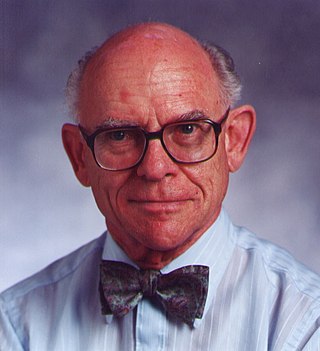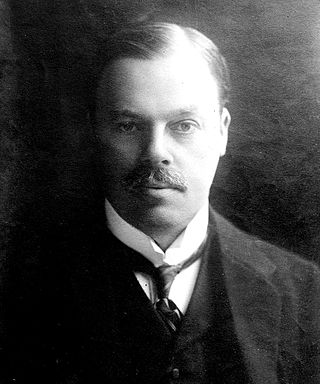
A Regius Professor is a university professor who has, or originally had, royal patronage or appointment. They are a unique feature of academia in the United Kingdom and Ireland. The first Regius Professorship was in the field of medicine, and founded by the Scottish King James IV at the University of Aberdeen in 1497. Regius chairs have since been instituted in various universities, in disciplines judged to be fundamental and for which there is a continuing and significant need. Each was established by an English, Scottish, or British monarch, and following proper advertisement and interview through the offices of the university and the national government, the current monarch still appoints the professor. This royal imprimatur, and the relative rarity of these professorships, means a Regius chair is prestigious and highly sought-after.
The Yusuf Hamied 1702 Chair of Chemistry is one of the senior professorships at the University of Cambridge, based in the Yusuf Hamied Department of Chemistry.

John Sibthorp was an English botanist.

Sir John Tomlinson Brunner, 1st Baronet, was a British chemical industrialist and Liberal Party politician. At Hutchinson's alkali works in Widnes he rose to the position of general manager. There he met Ludwig Mond, with whom he later formed a partnership to create the chemical company Brunner Mond & Co., initially making alkali by the Solvay process. As a Member of Parliament he represented Northwich, Cheshire, in 1885–1886 and then from 1887 to 1910. He was a paternalistic employer and as a politician supported Irish Home Rule, trade unions, free trade, welfare reforms and, leading up to the First World War, a more sympathetic stance towards Germany. Brunner was a prominent Freemason, and a generous benefactor to the towns in his constituency and to the University of Liverpool. He is the great grandfather of the Duchess of Kent.

John Garstang was a British archaeologist of the Ancient Near East, especially Egypt, Sudan, Anatolia and the southern Levant. He was the younger brother of Professor Walter Garstang, FRS, a marine biologist and zoologist. Garstang is considered a pioneer in the development of scientific practices in archaeology as he kept detailed records of his excavations with extensive photographic records, which was a comparatively rare practice in early 20th-century archaeology.
Peter Day was a British inorganic chemist and Professor of Chemistry at Oxford University and later at University College London (UCL).

Frank Albert Cotton FRS was an American chemist. He was the W.T. Doherty-Welch Foundation Chair and Distinguished Professor of Chemistry at Texas A&M University. He authored over 1600 scientific articles. Cotton was recognized for his research on the chemistry of the transition metals.
Thomas Eric Peet was an English Egyptologist.

The University of Liverpool Department of Archaeology, Classics and Egyptology has 40 members of staff and over 300 undergraduate and postgraduate students.
Donald Charlton Bradley, (1924–2014) was a British chemist who was recognized for his work on the chemistry of metal-alkoxides and metal-amides, their synthesis, structure and bonding, and for his studies of their conversions to metal-oxides and metal-nitrides.

Sir Anthony Kevin Cheetham is a British materials scientist. From 2012 to 2017 he was Vice-President and Treasurer of the Royal Society.
Aylward Manley Blackman, FBA was a British Egyptologist, who excavated various sites in Egypt and Nubia, notably Buhen and Meir. Having taught at Worcester College, Oxford, he was Brunner Professor of Egyptology at the University of Liverpool from 1934 to 1948. He was additionally a special lecturer at the University of Manchester, and was involved in or led a number of excavations with the Egypt Exploration Society.
Percy Edward Newberry was a British Egyptologist.

Richard Bruce Parkinson is a British Egyptologist and academic. He is Professor of Egyptology at the University of Oxford and a fellow of The Queen's College, Oxford. Until December 2013 he was a curator in the Department of Ancient Egypt and Sudan, British Museum.

Norman Neill Greenwood FRS CChem FRSC was an Australian-British chemist and Emeritus Professor at the University of Leeds. Together with Alan Earnshaw, he wrote the textbook Chemistry of the Elements, first published in 1984.

The Harold Vyvyan Harmsworth Professorship is an endowed chair in American history at the University of Oxford, tenable for one year. The Harmsworth Professorship was established by Harold Sidney Harmsworth, 1st Viscount Rothermere (1868–1940) in memory of his son Harold Vyvyan Alfred St George, who was killed in the First World War, and whose favourite subject was history. Lord Rothermere also established a Harmsworth Professorship in imperial and naval history at Cambridge University in honour of his son Vere, who was killed in the same war. The King Edward VII Professor of English Literature at Cambridge University was endowed by Sir Harold Harmsworth in memory of King Edward VII, who died in 1910.
William Cudmore McCullagh Lewis, FRS was a British chemist and academic. He was Brunner Professor of Physical Chemistry at the University of Liverpool.

Herbert Walter Fairman was a British Egyptologist. During his career he served as a field director for two excavations in Egypt that were funded by the Egypt Exploration Society.

Cecil Edwin Henry Bawn, was a British chemist and academic, specialising in chemical kinetics. He was Grant-Brunner Professor of Inorganic and Physical Chemistry (1948–1969) and Brunner Professor of Physical Chemistry (1969–1973) at the University of Liverpool. He had previously taught at the University of Manchester and the University of Bristol, before serving at the Ministry of Supply during the Second World War. He was president of the Faraday Society from 1967 to 1968.
Arthur Frank "Peter" Shore was a British Egyptologist, academic and museum curator, who specialised in Roman Egypt and Late Antiquity. He took degrees in classics and Oriental studies (Egyptology) at the University of Cambridge, before being elected a Fellow of King's College, Cambridge in 1955. He then worked at the British Museum from 1957 to 1974, and was Brunner Professor of Egyptology at the University of Liverpool from 1974 to 1991.











